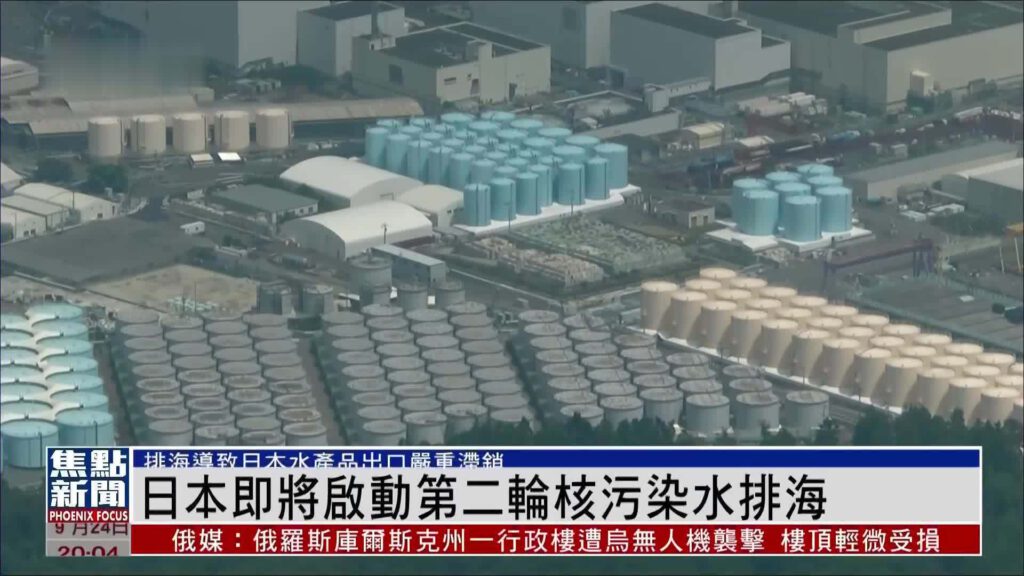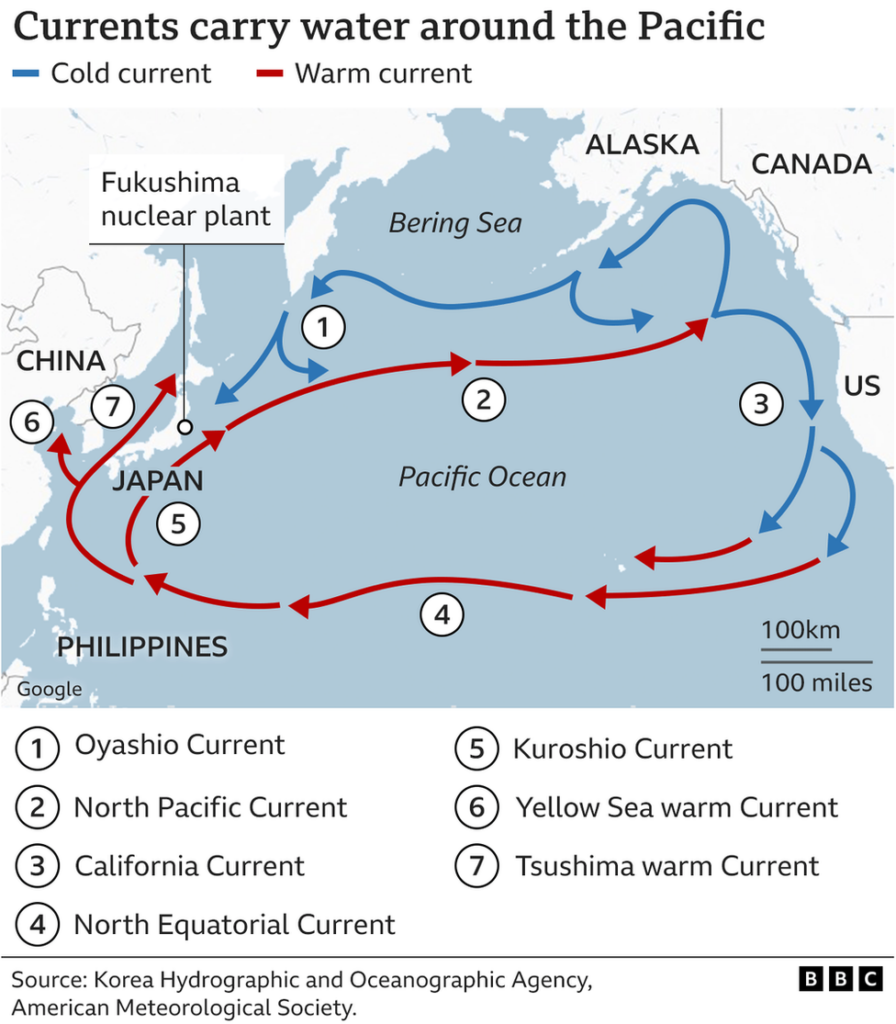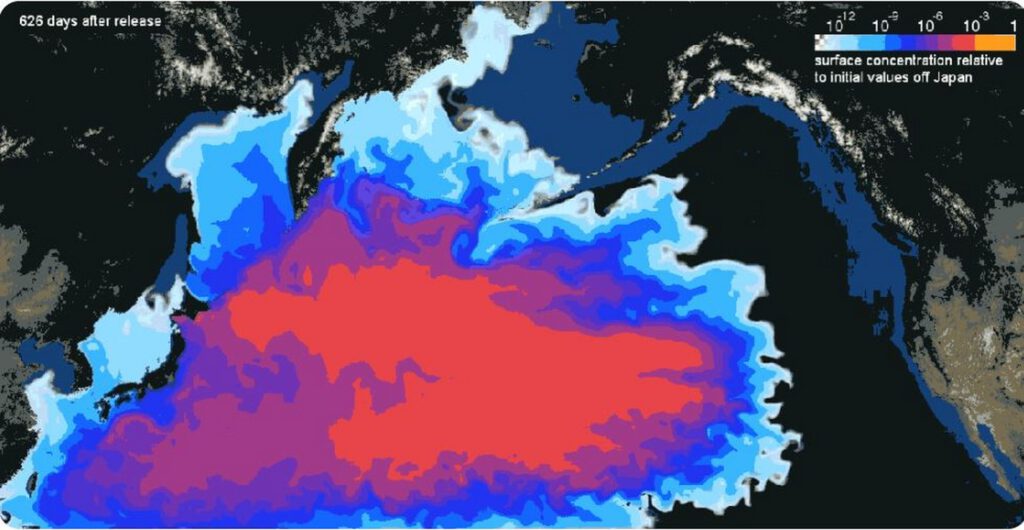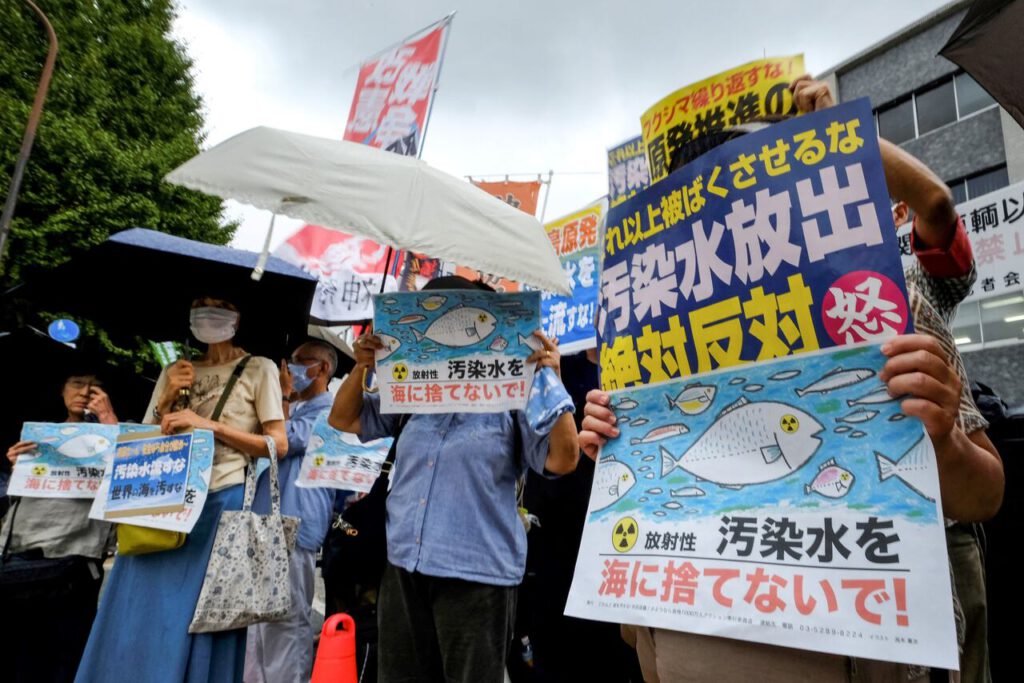
On August 24, the Japanese government unilaterally initiated the discharge of contaminated water from the Fukushima nuclear accident into the sea. According to Tokyo Electric Power Company’s plan, the first day’s release of nuclear-contaminated water will be between 200 and 210 tons. The initial phase of discharges will span 17 days, totaling approximately 7,800 cubic meters. Daily discharge amounts will be announced the following day. The emission plan is slated to continue for at least 30 years.
In the face of strong doubts and opposition from the international community, Japan has played a word game and called the nuclear-contaminated water it discharges treated nuclear wastewater.

However, nuclear-contaminated water and nuclear wastewater are essentially different and should not be conflated.
The origins of Fukushima nuclear-contaminated water
In 2011, an earthquake occurred in the Pacific Ocean northeast of Japan, triggering a tsunami. The Fukushima Nuclear Power Plant in Japan suffered extensive damage from the surging waters, and Tokyo Electric Power Company made a series of erroneous decisions, culminating in the meltdown of the Fukushima Daiichi Nuclear Power Plant.
In the aftermath of the nuclear accident, Tokyo Electric Power Company continued to pump fresh water to cool the fuel fragments in the reactor. The original coolant, newly injected water, and subsequent infiltration of groundwater and rainwater produced significant amounts of radioactive wastewater.

Afterward, Japan stored the contaminated seawater in water storage tanks. From 2011 to 2023, Japan built more than 1,100 water storage tanks in twelve years. Each water storage tank can store an average of one thousand tons to one thousand three hundred tons of water.
However, as the storage space is approaching saturation and there is no room to build new water tanks, the Japanese government has begun to propose a nuclear sewage treatment plan.
In 2016, a Japanese government expert group proposed five treatment options, including injecting underground pipelines into the ground, discharging into the sea, discharging steam into the atmosphere, electrolytic treatment, and solid-state landfill. Among them, discharging into the sea has the lowest cost.
A few years ago, the sea discharge plan was approved by the Japanese government. In June this year, the undersea pipeline construction project for discharging nuclear sewage was officially completed. Despite criticism from Japanese fishing groups and opposition from most countries and international organizations, on August 22, the Japanese government disregarded the criticism and declared that starting on the afternoon of the 24th, approximately 1.3 million tons of treated nuclear wastewater would be discharged into the sea over the next 30 years.

What is the controversy about this emissions plan?
According to the test results, the Fukushima nuclear-contaminated water contains more than 60 radionuclides. In addition to tritium, which is difficult to separate from the water, there are also carbon-14, iodine-129, etc. There are currently no effective treatment technologies for many of these radionuclides.
Some radionuclides have relatively short half-lives, decaying within 12 years of the catastrophic event, but some take longer, such as carbon-14, which has a half-life of 5,370 years.

However, TEPCO stated that although radioactive wastewater contains some dangerous elements, most of them can be treated through the Advanced Liquid Treatment System (ALPS), and 62 of the 64 radionuclides will be removed, except for tritium and carbon-14. The discharged nuclear wastewater will fully comply with regulatory standards.
For an extended period, TEPCO has primarily focused on the challenge of dealing with “tritium” in contaminated water—a hydrogen isotope called radioactive tritium in contaminated water. This isotope is difficult to separate from water and can be carcinogenic at high doses.
TEPCO, the Japanese government, and the International Atomic Energy Agency (IAEA) all assert that tritium naturally occurs in the environment, including in rainwater and tap water. They dilute the treated water with seawater so that the tritium content falls well below the standard level. The levels of ionizing radiation emitted at tritium concentrations are even lower than those experienced by someone flying between New York and Tokyo, indicating that the discharged water is safe and will gradually disperse over decades.

It wasn’t until 2020 that TEPCO acknowledged the presence of the radioactive isotope “Carbon-14” in “treated water”. The International Environmental Protection Organization stated in its investigative report on the TEPCO Fukushima Daiichi Nuclear Power Plant Contaminated Water Crisis that there is a high concentration of radioactive carbon-14 in the nuclear-contaminated water.
However, ALPS did not consider removing carbon-14 at the beginning of its design. The concentration of carbon-14 accumulated in marine organisms, that is, fish, may be 50 times that of tritium, and may damage human DNA.
TEPCO stated that there are no regular fishing activities within 3 kilometers of the discharge pipeline. But once a larger organism eats a smaller contaminated organism, these radioactive isotopes are likely to be present in the food chain.

The investigation by the International Environmental Protection Organization also found that the ALPS system mentioned by TEPCO not only cannot remove radioactive tritium and carbon-14 but also cannot completely remove other radioactive isotopes, such as strontium-90, iodine-129, and cobalt-60. It is a filtration system that has not been proven to be effective, and cesium and strontium-90 are isotopes that increase the risk of bone cancer and leukemia. Strontium-90 will be deposited in the bones and will take years to be excreted from the body.
Reactions of international parties towards emission plans
Upon the announcement of the emissions plan, the Japanese government and TEPCO launched an extensive public awareness campaign. Prime Minister Kishida pledged high transparency throughout the plan, while TEPCO committed to publishing real-time data on water radioactivity levels online.

The International Atomic Energy Agency (IAEA) granted approval for the release weeks prior, asserting that the radioactive impact of the treated “wastewater” on humans and the environment would be minimal. However, the IAEA’s understanding of TEPCO’s information is very limited.
The IAEA’s assessment primarily relies on data and information provided by Japan and only conducts inter-laboratory comparative analysis on a small number of nuclear-contaminated water samples unilaterally collected by Japan. The authenticity, accuracy, independence, and representativeness of these data and information are difficult to verify.
Some environmental groups have raised questions, arguing that Japan’s filtration process is flawed and that large amounts of radioactive material will spread into the ocean in the coming decades. In particular, the coast of Fukushima has the strongest ocean currents in the world. Radioactive materials will spread to most of the Pacific Ocean and may even spread to the global ocean within 10 years.

Many scientists from the National Marine Laboratory Association of the United States expressed opposition, saying that there is currently insufficient and accurate scientific data to support Japan’s safety claims, which may threaten 70% of the world’s fisheries.
The Philippine government has called on Japan to reconsider its emissions plans in the Pacific Ocean.
The General Administration of Customs of China announced a comprehensive suspension of imports of Japanese aquatic products.

According to a South Korean poll, 80% of South Korean people are worried about Japan’s emissions plan. Thousands of people participated in protests and demonstrations in Seoul, calling on the government to take action. Some members even shaved their heads and went on hunger strikes… Salt and other necessities were hoarded by the people, and the price of sea salt rose sharply.
According to reports from the Japan Broadcasting Association, Japan’s Ministry of Foreign Affairs has decided to launch a public relations plan and is expected to allocate 70 billion yen to deal with negative information about nuclear sewage.
According to the nuclear-contaminated water treatment report released by Japan’s Ministry of Economy, Trade and Industry in February 2020, this “public relations budget” is almost 20 times the budget for discharging nuclear-contaminated water into the sea, and twice the budget for steam emissions. The Japanese government would rather spend money on public relations than reluctance to adopt less harmful nuclear-contaminated water treatment options.

Japan has not proven the legitimacy of the decision to discharge the sea, the long-term reliability of the nuclear-contaminated water purification device, the true accuracy of the nuclear-contaminated water data, and the completeness and effectiveness of the monitoring plan. The ocean is the common property of all mankind.
Forcibly commencing the discharge of Fukushima nuclear-contaminated water into the ocean will shift the risk onto the entire world, infringing upon the rights to health, development, and environment of people from all nations. This act, prioritizing short-term interests over the long-term welfare of all of humanity, cannot be masked by semantics. It is bound to face condemnation and accountability from the international community for an extended period.
(Source: VOA News, CBC, BBC, TEPCO)



